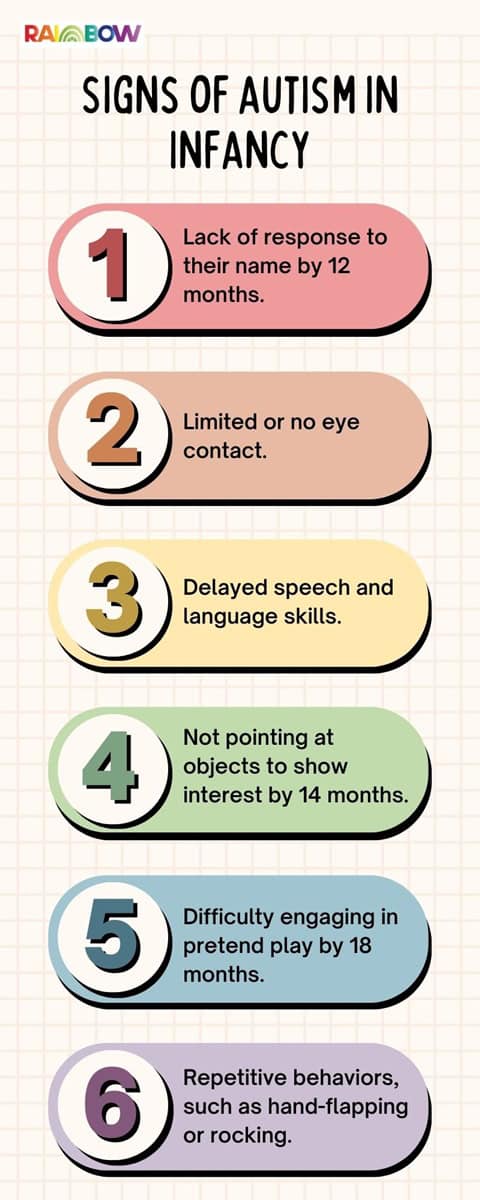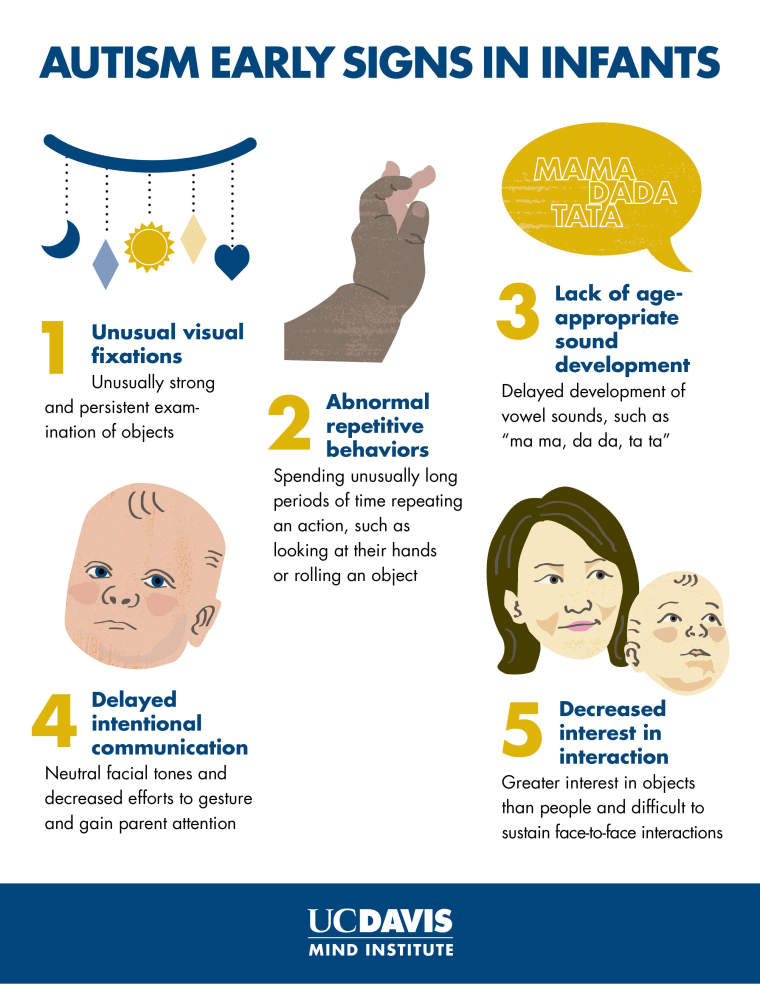How experts in Autism Spectrum Therapies address nonverbal communication barriers
How experts in Autism Spectrum Therapies address nonverbal communication barriers
Blog Article
Comprehending the Impact of Behavioral Autism on Life and Social Communications
You might not realize exactly how deeply behavioral autism affects day-to-day live and social communications. Individuals on the spectrum frequently browse a world loaded with communication hurdles and sensory overload. These obstacles can lead to stress and seclusion, influencing their relationships and total wellness. Comprehending these nuances is crucial for fostering encouraging settings. What approaches can we carry out to create more comprehensive spaces and purposeful links? The solutions may amaze you.
Defining Behavior Autism and Its Attributes
Behavioral autism, typically described as autism spectrum problem (ASD), incorporates a series of problems defined by challenges in social communication, interaction, and repetitive actions. You could observe that individuals with ASD frequently battle to analyze social hints, which can lead to misconceptions in conversations. They might find it hard to develop eye contact or take part in little talk, making social situations really feel frustrating.
Communication problems can show up in various means, from delayed speech growth to a preference for making use of less words. Recurring behaviors, such as hand-flapping or shaking, can offer as coping devices to handle anxiety or sensory overload. These features can profoundly influence life, making it crucial for you to understand and sustain those with ASD. By recognizing these characteristics, you can promote an environment that advertises approval and encourages efficient interaction, assisting people with autism prosper in their day-to-day interactions.
The Range of Autism: Understanding Variability in Behavior
Autism range disorder (ASD) isn't a one-size-fits-all diagnosis; it varies extensively among individuals. You might experience individuals who are highly verbal and involve conveniently in discussions, while others may choose solitary tasks or connect non-verbally.
In addition, the means individuals with ASD react to sensory input can differ substantially; some may be overwhelmed by brilliant lights or loud noises, whereas others thrive in boosting atmospheres. The spectrum additionally includes differences in social communications; some people may struggle to analyze social hints, while others browse social settings with relative convenience. Comprehending this irregularity is essential, as it aids you appreciate everyone's unique experience and dressmaker support to their details needs, cultivating an extra inclusive setting for everybody.
Interaction Difficulties Encountered by People With Autism
When you connect with people on the autism spectrum, you might discover their one-of-a-kind interaction difficulties. They frequently encounter difficulties with both verbal and nonverbal signs, which can affect their social interactions. Understanding these barriers is important for promoting better connections and assistance.

Verbal Interaction Difficulties
Several people on the autism range experience verbal communication problems that can substantially affect their everyday interactions. Your rate, tone, or quantity may not line up with social expectations, causing others to misinterpret your purposes. Acknowledging these difficulties can help you and your support network develop strategies to boost interaction and foster much better links with others in your everyday life.
Nonverbal Communication Obstacles
Spoken communication isn't the only difficulty individuals on the autism range face; nonverbal communication barriers can be simply as significant. You might discover it difficult to analyze body language, faces, and eye contact, which are important for reliable communication. These difficulties can cause misconceptions or false impressions of social hints, making interactions really feel overwhelming or complex. You may battle to reveal your own feelings via nonverbal means, leaving others unclear of your purposes or feelings. This detach can develop feelings of seclusion and frustration. Identifying these obstacles is crucial for fostering understanding and compassion in your communications. By addressing nonverbal interaction, you can find strategies to enhance your social experiences and enhance your general quality of life.
Social Communication Impacts
Social interactions can usually really feel overwhelming as a result of the unique communication obstacles faced by individuals with autism. You could fight with translating social hints, making it difficult to comprehend sarcasm or body language. This can bring about misconceptions try these out or unpleasant minutes in discussions. Additionally, starting and maintaining discussions might really feel tough, causing anxiousness in social situations. You may like structured atmospheres, making spontaneous interactions unpleasant. It's also common to experience trouble in participating in tiny talk, which can prevent creating new friendships. Recognizing these challenges can aid you find approaches to boost interaction, such as exercising social skills in risk-free settings or making use of aesthetic aids - Aba Therapist. Comprehending your requirements permits you to navigate social interactions with greater confidence and simplicity.
Social Interaction and Connection Building in Autism
While building relationships can be testing for individuals with autism, recognizing their unique viewpoints and communication designs can cultivate significant links. You may notice that lots of individuals on the spectrum like direct interaction and may fight with social hints or tiny talk. By being straightforward in your communications, you can assist produce an environment where they feel comfortable.
Make the effort to pay attention and observe how they share themselves. This insight can direct you in guiding discussions better. Taking part in shared interests can likewise function as a bridge to deeper links. Whether it's a hobby, a preferred show, or a shared enthusiasm, these common threads can open up doors to relationship.
Every Day Life Regimen: Browsing Strategies and obstacles
Maneuvering everyday life routines can be especially challenging for people with autism, specifically when unanticipated modifications happen. You could find convenience in having an organized schedule, as it assists you expect what's next. When disturbances take place, it's normal to feel overwhelmed or nervous. To navigate these difficulties, think about executing aesthetic routines or checklists. These tools can give clarity and peace of mind.
Developing a regimen that consists of sensory breaks can likewise be helpful. You can prepare time-outs throughout your day to recharge. It's vital to connect with those around you, letting them know your choices and needs. This helps develop an understanding environment.
Finally, method mindfulness techniques to manage stress and anxiety and stress and anxiety. Simple breathing workouts or grounding methods can make a considerable difference. By integrating these strategies, you can improve your day-to-day routine and decrease disturbances, making life feel a lot more convenient.
Strengths and Capabilities of Individuals on the Autism Spectrum
Recognizing everyday life routines is just one aspect of the autism experience. Several people on the autism spectrum have amazing staminas and capabilities that set them apart.
Furthermore, your memory skills typically radiate, particularly in areas of rate of interest. Autism Therapist. This propensity for maintaining details can make you a beneficial source in areas like science, innovation, or art. You may also these details exhibit solid visual thinking, enabling you to envision complicated concepts and solve troubles artistically
Additionally, your unique perspective on the globe can promote empathy and understanding in others, enriching social interactions. Welcoming directory these staminas not just increases your self-confidence yet also aids others value the varied abilities you bring to the table.
Creating Comprehensive Atmospheres for Individuals With Autism
Developing comprehensive environments for individuals with autism begins with developing sensory-friendly spaces that provide to their distinct demands. You can also promote opportunities for social communication, assisting to construct links and friendships. By making these adjustments, you'll add to a more inviting environment for everybody.
Designing Sensory-Friendly Spaces
While creating sensory-friendly areas, it's crucial to reflect on the one-of-a-kind needs of people with autism. Include silent zones where individuals can pull away and recharge when bewildered. Include visual schedules or clear signs to aid people browse the room with confidence.
Promoting Social Communication Opportunities
Creating sensory-friendly rooms not just addresses private convenience however additionally sets the phase for meaningful social interactions amongst individuals with autism. Motivate peer mentoring, pairing individuals with autism with encouraging peers that can lead them through social circumstances. By carrying out these methods, you can enhance social chances, assisting people with autism build friendships and reinforce their social abilities in a secure, welcoming environment.

Regularly Asked Inquiries
Just How Can Buddies Support A Person With Behavioral Autism?
You can support a pal with behavioral autism by holding your horses, listening proactively, and appreciating their boundaries. Participate in tasks they enjoy, communicate freely, and create a comfy environment where they really feel valued and comprehended.
What Resources Are Offered for Parents of Children With Autism?
You can explore various sources for parents of kids with autism, including assistance groups, educational websites, and regional social work. Attaching with other parents can additionally supply beneficial understandings and shared experiences to aid navigate challenges.
Can Behavioral Autism Modification Gradually?

Yes, behavior autism can change with time. You may discover changes in communication, social abilities, and actions as your child grows. Early treatment and support frequently play vital duties in these developmental adjustments.
Just How Do Sensory Level Of Sensitivities Influence Day-to-day Live?
Sensory sensitivities can make daily experiences overwhelming. You might battle with brilliant lights or loud sounds, leading to tension or evasion. Finding settings that accommodate your demands can substantially enhance your convenience and total daily life.
What Are Usual Misconceptions Regarding Behavioral Autism?
You could believe behavior autism only impacts interaction abilities, but it's more complicated. Many assume individuals lack empathy or intelligence, which isn't real. Comprehending these mistaken beliefs aids foster approval and assistance for those on the range.
Behavior autism, typically referred to as autism range disorder (ASD), incorporates an array of conditions defined by difficulties in social interaction, interaction, and recurring actions.Social communications can typically really feel frustrating due to the distinct interaction challenges faced by people with autism.Creating sensory-friendly areas not only addresses specific convenience yet likewise establishes the phase for significant social communications amongst people with autism. Encourage peer mentoring, matching people with autism with encouraging peers that can lead them via social scenarios. By implementing these approaches, you can improve social opportunities, aiding people with autism build relationships and reinforce their social abilities in a safe, inviting environment.
Report this page